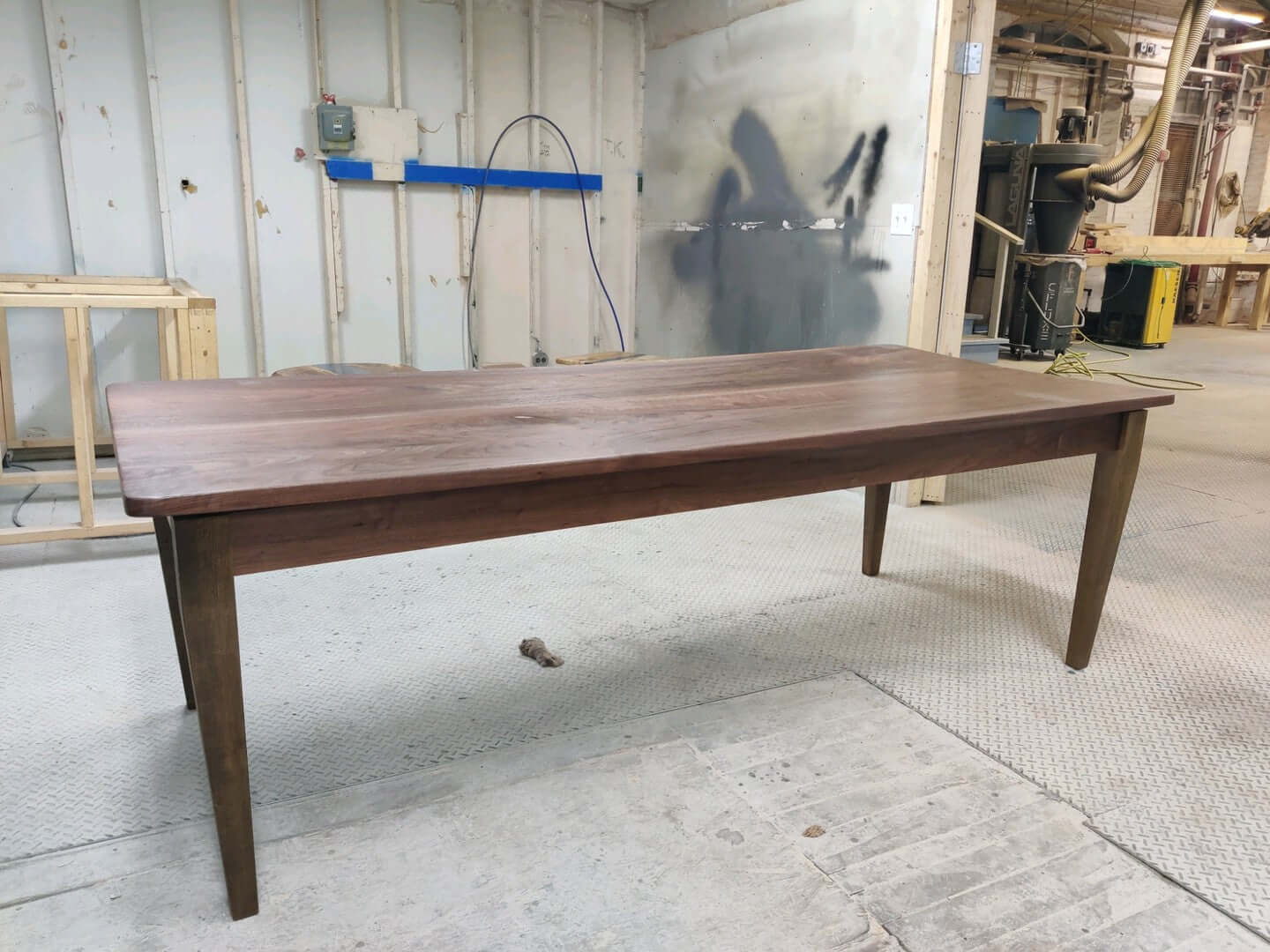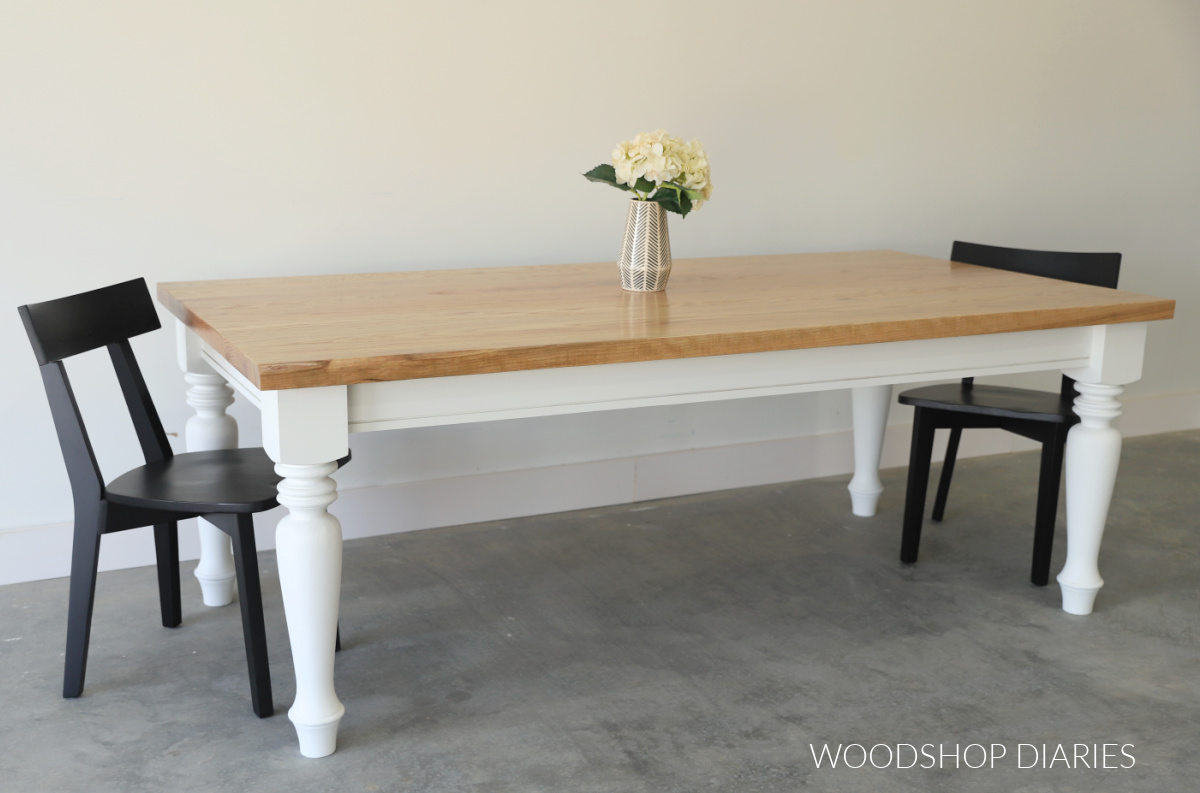What to Think About When Selecting Eating Table Legs Wood for Your Home.
When selecting wood for dining table legs, a number of vital aspects warrant cautious consideration to guarantee both performance and aesthetic charm. The type of wood selected can substantially influence the table's sturdiness, stability, and general style, while the maintenance requirements may influence lasting usability.

Significance of Timber Kind
When picking eating table legs, the selection of timber kind plays a critical duty in figuring out both appearances and durability. Various timber types use varying levels of weight, toughness, and resistance to put on, which can dramatically affect the performance and longevity of the table.
Conversely, softer timbers like want or poplar, while much more cost-effective, might not use the same degree of toughness and may require even more regular maintenance or substitute. The wood kind likewise influences the table's capacity to withstand environmental variables such as humidity and temperature level changes. The selection of wood can influence the simplicity of discoloring and ending up, which can be critical for accomplishing the preferred look.
Aesthetic Factors To Consider
The aesthetic charm of dining table legs substantially adds to the general visual of the dining area. Dining Table Legs Wood. When selecting wood for eating table legs, the grain coating, pattern, and color are critical aspects that can enhance or detract from the room's style. Various wood types display differing appearances and shades; for circumstances, oak offers a classic look with famous grain, while walnut supplies a rich, dark beauty
Additionally, the shape of the legs plays an essential function in specifying the table's personality. Sleek, minimalist legs can produce a contemporary feeling, while extra ornate, turned legs evoke standard appeal. The design of the legs need to integrate with existing furnishings and the overall theme of the space, whether it be rustic, contemporary, or transitional.
It is additionally vital to consider how the legs communicate with other furniture pieces, including chairs and sideboards. A natural design not only elevates the eating experience yet additionally contributes to the home's total visual comprehensibility. Eventually, the choice of table legs need to be a thoughtful choice that mirrors individual taste while guaranteeing visual harmony within the room.

Toughness and Security
Resilience and stability are essential factors in the choice of table legs, as they straight affect the long life and safety of the furnishings. When picking timber for eating table legs, one must consider the fundamental buildings of numerous wood kinds. Woods, such as maple, cherry, and oak, are usually preferred for their strength and resistance to wear, making them suitable for high-traffic dining areas.
In addition to the kind of wood, the construction method also plays a significant duty in the total security of the table. Legs that are solidly created, either via typical joinery strategies or modern-day design techniques, will offer enhanced assistance and page protect against tottering. It is vital to review the density and style of the legs; thicker legs are typically much more stable and can hold up against better weight.
Additionally, the environmental problems in which the eating table will certainly be utilized can affect resilience. Wood that has actually been appropriately treated for dampness resistance will certainly carry out better in damp environments. Inevitably, selecting the best mix of long lasting wood and secure building will make certain that your dining table remains a risk-free and functional focal point in your home for several years to find.
Maintenance Demands
Selecting eating table legs made from durable timber is just the start; comprehending upkeep demands is just as crucial to preserve their appearance and capability. Different timber types call for varying degrees of care, so it is necessary to understand what is required for your particular selection.
Regular cleansing is fundamental; utilize a soft, wet cloth to eliminate dust and debris. Stay clear of harsh chemicals that can damage the coating. For wood surfaces like varnish or lacquer, routine polishing with furniture wax can boost shine and offer a safety layer versus scratches.
Preventative measures are important (Dining Table Legs Wood). Usage coasters and placemats to prevent straight call with hot or wet things, which can warp or stain the wood. Furthermore, take into consideration positioning felt pads under the legs to avoid scrapes on your floor covering and lower endure the timber
Moisture control is another significant element; preserving a secure setting aids to stop warping and breaking. Think about utilizing a humidifier or dehumidifier as needed. if your eating area is susceptible to changes in temperature level and dampness.
Spending Plan and Price Aspects
When intending to acquire eating table legs, comprehending budget plan and expense elements is important to make a notified decision. The type of timber selected for the legs significantly influences the total rate. Hardwoods, such as oak or walnut, have a tendency to be much more expensive than softwoods like ache, as a result of their resilience, aesthetic appeal, and scarcity. In addition, take into consideration whether you are buying pre-made legs or choosing for custom-made styles, as customization often sustains higher expenses.
Labor and craftsmanship also play an essential role in the general expenditure. Handmade or artisan-crafted legs may bring a costs price, showing the skill and time purchased their production. It's essential to analyze the balance between top quality and cost; investing extra upfront can lead to a longer-lasting item that calls for less maintenance with time.
Conclusion
In summary, choosing the More hints ideal wood for dining table legs requires mindful consideration of various variables, including wood kind, visual allure, upkeep, longevity, and budget restraints. The selection of woods such as oak and maple can enhance both strength and visual appeal, while softer woods might be much more cost-effective however less enduring. Eventually, a knowledgeable decision concerning material selection will contribute to the total capability and long life of the dining table, ensuring a valuable investment for the home.
When picking timber for eating table legs, a number of important elements require careful consideration to make certain both capability and visual appeal.When picking eating table legs, the option of wood kind plays a critical duty in figuring out both looks and toughness. When choosing wood for eating table legs, the grain surface, pattern, and shade are pivotal components that can take away or enhance from the area's style. When selecting wood for eating table legs, one should consider the integral buildings of pop over to these guys different timber types.In recap, choosing the appropriate wood for eating table legs requires mindful factor to consider of various aspects, including timber type, aesthetic allure, durability, budget, and maintenance restrictions.